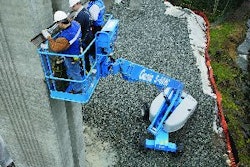A recently released book is creating quite a stir in the construction marketplace. In fact, some industry insiders are calling it an "insult" to most construction firms. After glancing through its pages, I can certainly appreciate why.
The book in question is "Broken Buildings, Busted Budgets" (University of Chicago Press) by Barry B. LePatner. The author is touted as a "prominent construction attorney... with three decades of experience representing clients that include eminent architects and engineers, as well as corporations and developers."
From its opening pages, the publication seems set on ruffling contractors' feathers. In fact, its stated purpose is to help potential project owners "understand how the construction industry functions and why it is so inefficient and so likely to try to bust your budget or supply an inferior product."
Although the author's public relations firm assures the book "is far from an indictment of contractors themselves," this is little consolation given its content. Consider this excerpt from the first chapter:
"If there's anything Americans are more cynical about than politics, it is construction. And with good reason. In politics at least we get an opportunity to vote and turn out one set of rascals for another - the appearance of change anyway. In construction we do not seem to have even that much choice. It always costs more and always takes longer than the owners thought. And always, if they want their building finished, owners put-up and pay-up."
LePatner goes on to contend that construction is "the industry that time has forgotten" - plagued by outdated processes, and composed primarily of "mom-and-pop shops" that are "hugely inefficient, and? have no money to spend on improving performance and technology."
His proposed solution is to consolidate these smaller firms into vertically integrated mega-contractors that can deliver greater cost efficiencies. He also advocates fixed-price contracts that would eliminate any questions about project costs.
To say these suggestions are naive is an understatement. The mom and pop shops he condemns are the heart of this industry, performing the lion's share of construction activity. And the firms that have proven most capable of achieving and sustaining growth over the years have done so not by overbidding or issuing excessive change orders, as he charges, but by completing projects on time, on budget and to specifications via efficient management and cost control techniques.
As Stephen Sandherr, chief executive for the Associated General Contractors of America, points out, the construction industry has readily embraced innovative processes, including design-build, construction management at-risk, value engineering and building information modeling. It is also proactive in using new equipment technology that further enhances productivity and shortens project timelines.
Admittedly, there are some valid arguments to be found in LePatner's book. And in all fairness, perhaps his intentions weren't to issue an indictment, but to get those in the industry talking about the cost control challenges it faces. Yet, his over-generalizations and inflammatory statements are more likely to alienate the very audience best equipped to address, and fix, what he contends is broken.



















